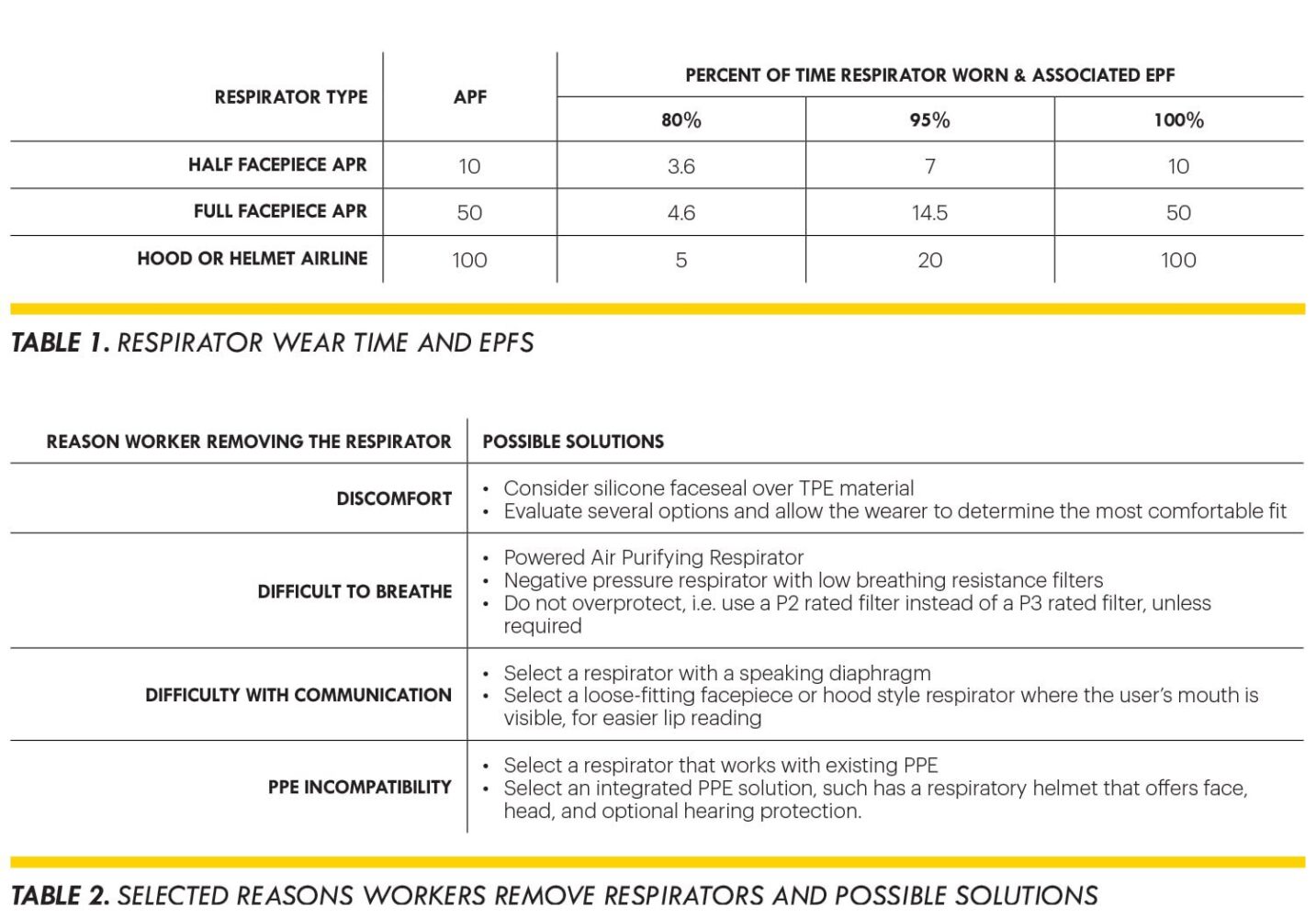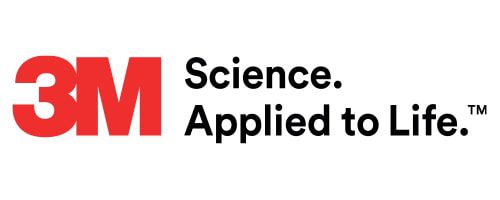No respirator provides total protection or provides the wearer a guaranteed zero-exposure level. The primary objective of a respirator is to reduce a worker’s inhalation exposure from a level that is considered hazardous to a level that is considered safe. However, a respirator cannot do its job if it is not being worn during all times of exposure. Not wearing the respirator for even short periods during exposure will reduce protection.
Training respirator wearers on the effects of removing their respirator prematurely and allowing them to select a respirator that is more suitable for them and their application are two ways to help ensure a respirator is being worn at all times during contaminant exposure.
There are several ways air contaminants can enter workers’ lungs during respirator use:
- Inadequate Filtration
- The correct type and class of filter needs to be selected for the contaminants involved. A suitable filter change schedule needs to be established. Ineffective Face Fit: The face to facepiece seal or fit can be assessed either by quantitative or qualitative fit testing methods. If the fit is satisfactory, as determined by one of these test methods and confirmed by user seal checks, this concern can be reduced.
- Improper Maintenance: The respirator must be properly maintained. A respirator that has been shown to fit well will not offer much protection if the exhalation valve is blocked open by improper cleaning or mis-assembly.
- Non-Wear Time: Contaminants can enter directly into the lungs if the respirator is removed, even for short periods of time, while in a contaminated area. The respirator could be removed prematurely due to discomfort, or to improve communication, or once a task is complete but prior to leaving the contaminated area. Worker education may be the best way to help respirator users understand how removing the respirator can affect their overall protection.
Assigned Respiratory Protection Factor & Effective Protection Factor
The reduction in exposure can be measured by comparing the effective protection factor, or EPF, with the respirator’s APF, or assigned protection factor. The Assigned Protection Factor (APF) is defined as: the workplace level of respiratory protection that a respirator or class of respirators is expected to provide to employees when the employer implements a continuing, effective respiratory protection program as specified by AS/NZS 1715. Respirator assigned protection factors (APFs) can only be obtained when the respirator is properly selected, fit tested, maintained and worn during all times of exposure.
“Employers should train workers to help them understand the decreased protection effects of not wearing their respirator during times of exposure.”
The Effective Protection Factor (EPF) is the actual level of protection that would be provided by the respirator when taking into account any non-wear time during an exposure situation.
Worker’s Wear Time
We can see from Table 1 that any non-wear time will have a degrading effect on the protection provided by a respirator e.g. a half mask respirator that should be providing a 10 times reduction in exposure to the wearer, if worn for 95% of the exposure time, will provide the wearer only a 7 times reduction in exposure. The degrading effect is even more marked for respirators with higher APF’s – with a 95% wear time, a hood or helmet airline respirator user is only getting an EPF of 20 instead of the expected 100. Note that a 95% wear time means the respirator will be off for a total of only 3 minutes in each hour of exposure!
Wearing a respirator at all times during exposures is crucial. What can be done to increase respirator wear time? Workers should be educated on the dangers of not wearing the respirator, even for short periods of time. Table 1 can be used to demonstrate the effect and assist with the training process. It is clear to see that the chances of overexposure significantly increase for any amount of non-wear time – so a helmet wearer that occasionally lifts his/her visor to communicate, assuming the helmet has been selected due to a greater level of airborne contamination will get a greatly degraded level of protection.
In addition to appropriate education, employers should provide respirators that are well accepted by the wearers. It makes sense that improved worker comfort and acceptance will naturally lead to increased wear time. Factors like comfort on the face, ease of breathing, and ability to communicate are a few factors that should be considered when selecting a respirator. Table 2 provides several examples why a respirator could be removed during a time of contaminant exposure and possible solutions.

Conclusions
Although a respirator may be doing an excellent job in helping reduce the wearer’s exposure to a level below the relevant Workplace Exposure Standard during the majority of the shift, overall protection will be drastically reduced if the respirator is not worn even for brief periods where the worker is exposed to completely unfiltered airborne contaminants.
Employers should train workers to help them understand the decreased protection effects of not wearing their respirator during times of exposure.
When possible, allow respirator wearers to trial and select equipment that is the best fit for them as well comfortable and suitable for their application.
If you have any questions or require further information, please contact your 3M Personal Safety Representative or call TechAssist at 1800 024 464 (AUS)
and 0800 364 357 (NZ) or email techassist@mmm.com. Visit https://www.3m.com.au for more information.
























